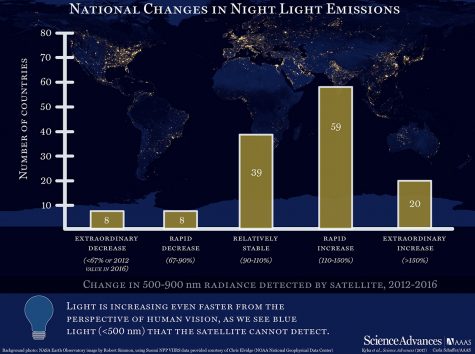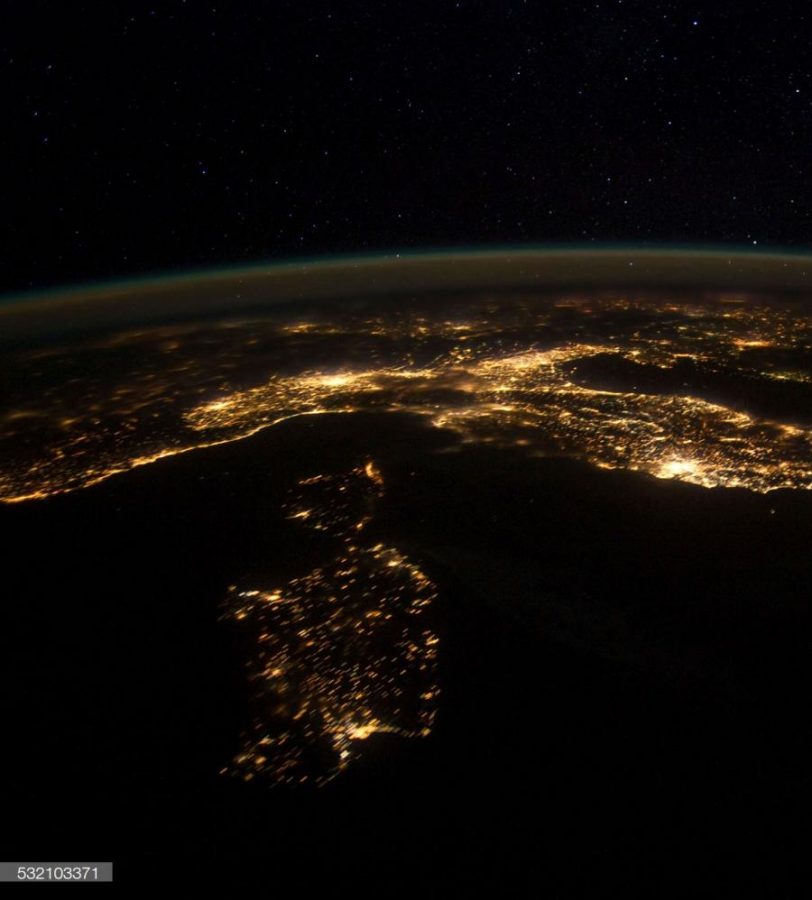Where are the Stars?
On cloudless nights, one may wonder where the stars are. The artificial light used to illuminate many cities and streets is polluting the sky.
As populations increase, so does the need for light, as the world becomes 2% brighter each year. The unnecessary usage of artificial light is blocking the incredible views of the night sky. The places where people once visited for the beautiful views and starry nights have lost their allure with the increasing pollution. Kelsey Johnson an astrologist who wrote the article “Is the Evening Sky Doomed?” elaborates on the light pollution epidemic.
“The night sky in Saint-Rémy, France, which once inspired the iconic van Gogh painting ‘Starry Night,’ now suffers from so much light pollution that the Milky Way is virtually imperceptible,” said Dr. Johnson.
The artificial light comes with many risks: it is draining the economic resources, and is associated with many negative side effects on people’s health. It also correlates with many forms of cancer, and disrupts people’s circadian rhythms, which affects the production of melatonin during sleep.

The world is rapidly increasing its light pollution at alarming rates.
“Well, obviously there’s a lot of light pollution which is bad for the environment in general. Humans are just so connected to their devices they have stopped appreciating nature and its beauty. We waste so much energy trying to produce light when we should be shutting our lights off at night, we are sleeping, so what is the point of having our porch lights on. I have heard a lot about climate change in school and from the news, and knowing what we know we could make a difference just by turning our lights off at night,” said senior Roma Kamat.
Artificial light also affects the environment, including feeding, mating, and migration of animals. In coastal areas, it disrupts turtles nesting and disorients their hatchlings when they emerge.
“We need to clear our heads and clear our hearts in order to clear the skies,” said junior Lukas Biermann.
One of the challenges faced with light pollution is that the problem is far worse than what people can initially detect with the naked eye. Invisible light can only be detected by technology and radio telescopes and it is being hidden by strong signals from Earth. Astrologists rely on invisible light to scope out the universe and see what is happening, it also is used to communicate on space missions.
Artificial light may be convenient for various people on Earth, but by creating more efficient outdoor lighting, it does not actually reduce the effects of light pollution and is causing almost irreversible problems. If one is living in an urban area–like 80% of Americans–then most are not seeing any stars at night. Light pollution affects people, animals, sea creatures, and the universe that scientists explore and communicate through. If people do nothing to reduce these risks, there will not be any starry nights left to be seen by future generations, aquatic animals could go extinct, and space travel may come to a stop.







